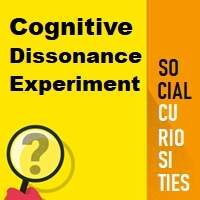
The Cognitive Dissonance Experiment
The Cognitive Dissonance Experiment is based on the theory that people hold many different cognitions about their world, for example about their environment and their personalities. In an event wherein some of these cognitions clash, an unsettled state of tension occurs and this is called cognitive dissonance.
In 1959 Leon Festinger conducted an experiment where participants were asked to perform a series of painstakingly boring tasks, such as pointlessly turning pegs in a peg board for an hour. Participants responses toward the task were highly negative.
They were then paid either $1 or $20 to tell a participant waiting in the lobby that the tasks were really interesting.
When the participants were later asked to evaluate the experiment, the participants who were paid only $1 to lie to the waiting participants rated the tedious task as more fun and enjoyable than the participants who were paid $20 to lie.
It seems that being paid only $1 is not a sufficient incentive for lying, and so those who were paid $1 experienced dissonance. They could only overcome that dissonance by coming to believe that the tasks really were interesting and enjoyable.
Being paid $20 provides a reason for turning pegs and there is therefore no dissonance. Therefore people, when persuaded to lie without being given enough justification, will convince themselves of the falsehood, rather than telling a lie.
In conclusion, people, when persuaded to lie without being given enough justification, will perform a task by convincing themselves of the falsehood, rather than telling a lie. While it is true that the experiment took place in the 50s, the results are still being recognized up to this date.


